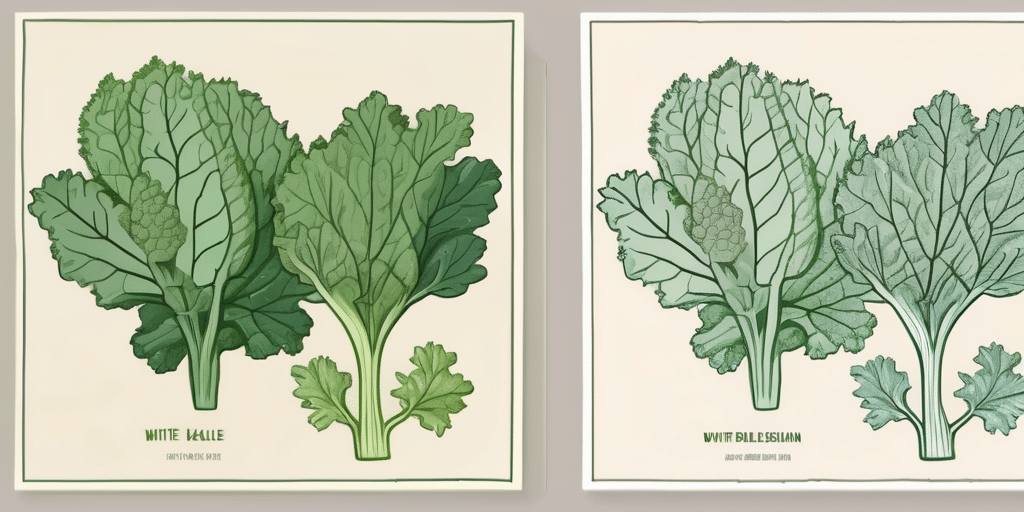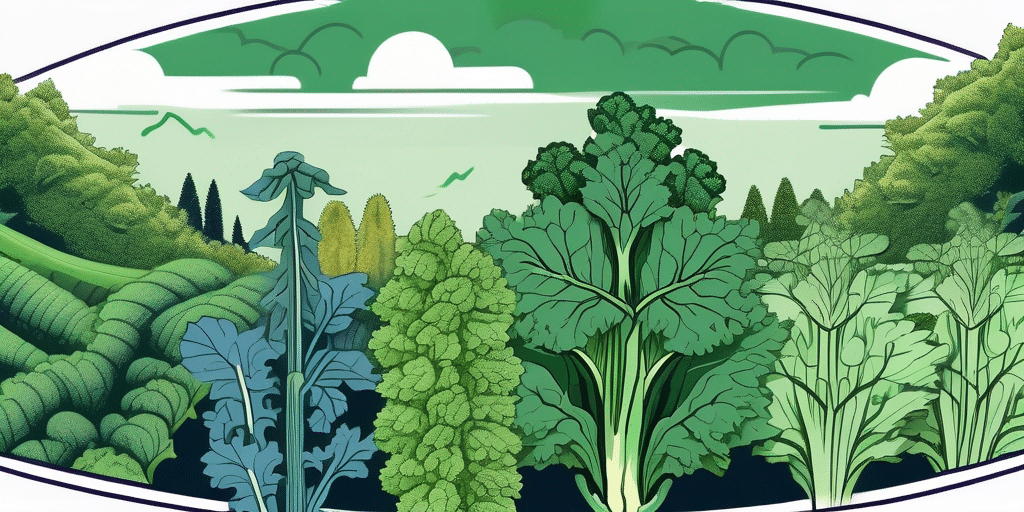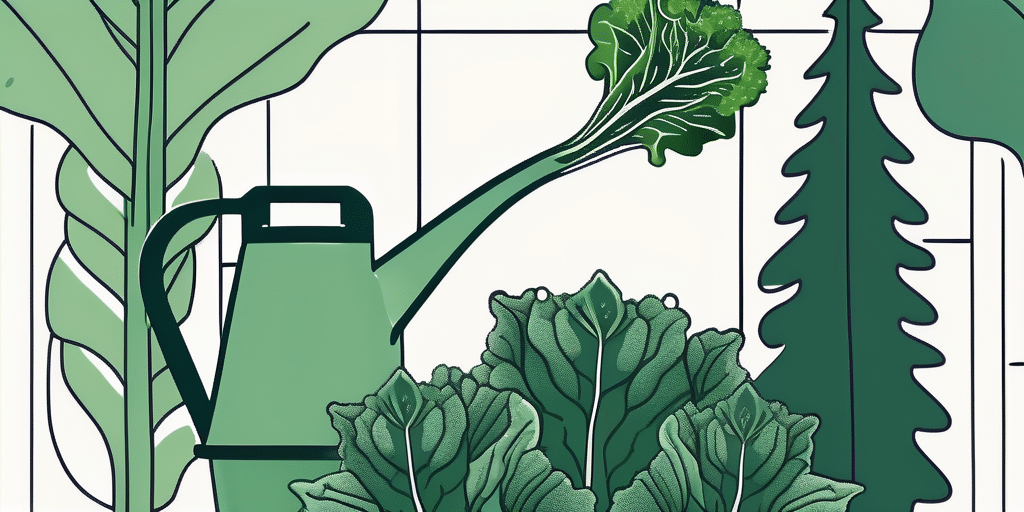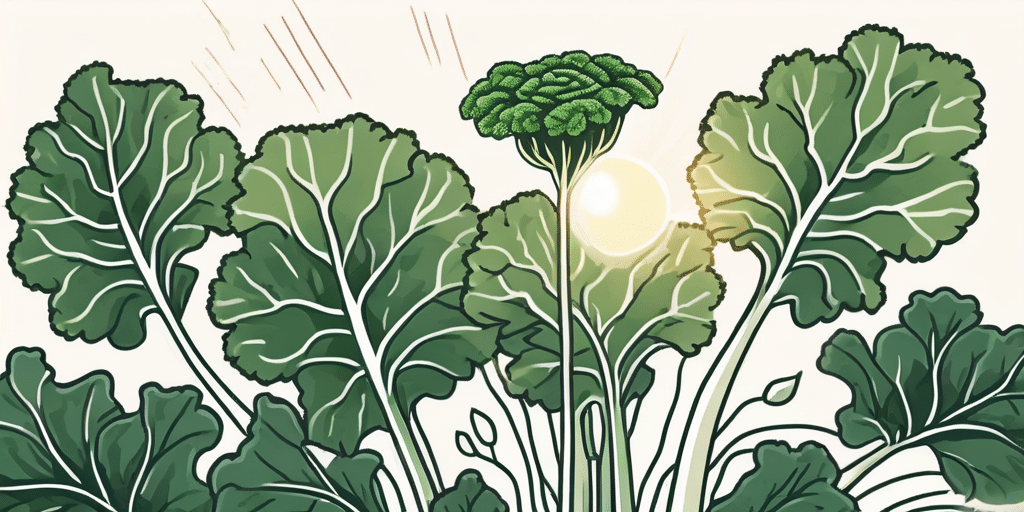Are you looking to add some nutritious and delicious greens to your garden in Florida? Look no further than Dwarf Siberian Kale! This hardy and versatile vegetable is a great addition to any garden, and in this article, we will dive into all the details on when to plant and how to grow this wonderful plant in the Sunshine State. So grab your gardening gloves and let’s get started!
Climate & Hardiness Zones in Florida
Before we jump into planting and growing Dwarf Siberian Kale, it’s important to understand the climate and hardiness zones in Florida. The Sunshine State is known for its warm and sunny weather, but it’s also home to diverse microclimates and varying hardiness zones.
According to the United States Department of Agriculture (USDA), Florida is divided into several hardiness zones, ranging from zone 8b in the northern parts of the state to zone 11 in the southernmost regions. These zones are determined by factors such as minimum winter temperatures and serve as a guide for gardeners to select plants suitable for their specific area.
Florida’s climate is influenced by its proximity to the Gulf of Mexico and the Atlantic Ocean. The state experiences a subtropical and tropical climate, with high humidity and abundant rainfall during the summer months. This unique climate provides ideal growing conditions for a wide variety of plants, including tropical fruits, citrus trees, and palms.
Within Florida, there are also microclimates that can affect plant growth. For example, coastal areas tend to have milder temperatures due to the moderating effects of the ocean, while inland regions may experience more extreme temperature fluctuations. It’s important for gardeners to consider these microclimates when selecting plants for their gardens to ensure successful growth and cultivation.
When to Plant Dwarf Siberian Kale in Florida
Now that you have a better understanding of the climate and hardiness zones in Florida, let’s talk about when to plant Dwarf Siberian Kale. This cool-season vegetable thrives in mild temperatures and can tolerate some frost, making it perfect for Florida’s winter gardening season.
The ideal time to plant Dwarf Siberian Kale in Florida is during the fall, between October and November, when the temperatures start cooling down. Planting during this time allows the young plants to establish their roots and develop before the cooler winter months. Keep in mind that kale seeds can take anywhere from 7 to 14 days to germinate, so be patient and provide consistent moisture during this process.
Once your Dwarf Siberian Kale plants have established themselves, you can look forward to a bountiful harvest. This variety of kale is known for its tender leaves and sweet flavor, making it a versatile ingredient in salads, smoothies, and stir-fries. Rich in vitamins A, C, and K, as well as antioxidants, Dwarf Siberian Kale is a nutritious addition to any diet.
When planting Dwarf Siberian Kale, ensure that the soil is well-draining and rich in organic matter to promote healthy growth. Consider adding a layer of mulch around the plants to retain moisture and suppress weeds. Regularly inspect your kale plants for pests like aphids or cabbage worms, and take appropriate measures to protect your crop. With proper care and attention, your Dwarf Siberian Kale will thrive and provide you with a fresh supply of nutrient-rich greens throughout the season.
How to Plant Dwarf Siberian Kale in Florida
Planting Dwarf Siberian Kale in Florida is a relatively straightforward process. Here’s a step-by-step guide to help you get started:
- Choose a sunny location in your garden with well-draining soil. Kale prefers full sun exposure for at least 6 hours a day.
- Prepare the soil by removing any weeds or debris and adding organic matter such as compost or well-rotted manure. This will improve soil fertility and drainage.
- Sow the seeds directly into the soil, spacing them about 12 to 18 inches apart. Plant the seeds at a depth of ¼ to ½ inch.
- Water the seeds gently but thoroughly after planting, making sure the soil is evenly moist. Avoid overwatering, as kale plants prefer slightly drier conditions.
- As the seedlings emerge, thin them to leave the strongest ones, spacing them 8 to 12 inches apart. This will allow each plant to have enough space to grow and develop fully.
- Apply a layer of mulch around the plants to help retain moisture, suppress weeds, and regulate soil temperature.
- Monitor the moisture levels in the soil and water the plants deeply when necessary, ensuring that the soil remains consistently moist but not waterlogged.
Florida’s climate provides a unique environment for growing Dwarf Siberian Kale. With its warm temperatures and ample sunshine, kale thrives in the Sunshine State. The sandy soils common in Florida can benefit from the addition of organic matter, which helps retain moisture and nutrients essential for the growth of healthy kale plants.
When planting Dwarf Siberian Kale in Florida, consider incorporating companion plants such as marigolds or nasturtiums to help deter pests and attract beneficial insects to your garden. These companion plants not only add aesthetic value but also contribute to the overall health of your kale crop by creating a more diverse and balanced ecosystem.
When to Harvest or Pick Dwarf Siberian Kale in Florida
The exciting moment has finally arrived – it’s time to harvest your Dwarf Siberian Kale! This particular variety is known for its rapid growth, which means you’ll be able to enjoy fresh, homegrown kale sooner than you might think.
Typically, Dwarf Siberian Kale reaches maturity within 50 to 60 days from planting, but you can start harvesting the outer leaves when they reach a size of around 6 to 8 inches. By picking the outer leaves first, you allow the inner leaves to continue growing and provide a continuous harvest throughout the season.
When harvesting, simply use a pair of garden scissors or sharp kitchen shears to cut the leaves at the base, leaving the central growth point intact. This practice allows the plant to continue producing new leaves for an extended period.
Frequently Asked Questions
Now, let’s address some frequently asked questions about Dwarf Siberian Kale:
Q: Is Dwarf Siberian Kale suitable for container gardening?
A: Absolutely! Dwarf Siberian Kale is well-suited for container gardening due to its compact size. Make sure to choose a container with sufficient drainage holes and use high-quality potting soil. Place the container in a spot with ample sunlight, and don’t forget to water regularly.
Q: Can I grow Dwarf Siberian Kale in the summer months in Florida?
A: While Dwarf Siberian Kale prefers cooler temperatures, it can tolerate some heat. If you’re planning to grow it in the summer months, consider providing shade during the hottest part of the day and ensuring consistent moisture to prevent the plants from bolting or becoming bitter.
Q: How do I store freshly harvested Dwarf Siberian Kale?
A: To store freshly harvested Dwarf Siberian Kale, gently wash the leaves, pat them dry, and place them in a resealable bag or airtight container lined with paper towels. Store the kale in the refrigerator’s crisper drawer, where it will stay fresh for up to a week.
Q: How can I use Dwarf Siberian Kale in cooking?
A: The culinary possibilities with Dwarf Siberian Kale are endless! This versatile leafy green can be enjoyed raw in salads, sautéed with garlic and olive oil, added to stir-fries, or even baked into crispy kale chips. Experiment with different recipes to discover your favorite way to enjoy this nutritious vegetable!
With its vibrant color, nutritional value, and ease of cultivation, Dwarf Siberian Kale is a fantastic addition to any garden in Florida. Follow the guidelines outlined in this article, and soon you’ll be harvesting and enjoying fresh and flavorful kale straight from your backyard. Happy gardening!
Join How to Grow Everything for More Gardening Success!
Ready to take your Florida garden to the next level? Subscribe for free to How to Grow Everything and learn how to build the garden of your dreams! Receive personalized gardening advice tailored to your specific location, grow zone, and experience level. Enjoy the best gardening tips, special offers, and deals delivered straight to your inbox. It’s 100% free, with no spam, just valuable information from our family to yours. Start growing your Dwarf Siberian Kale and much more today!






